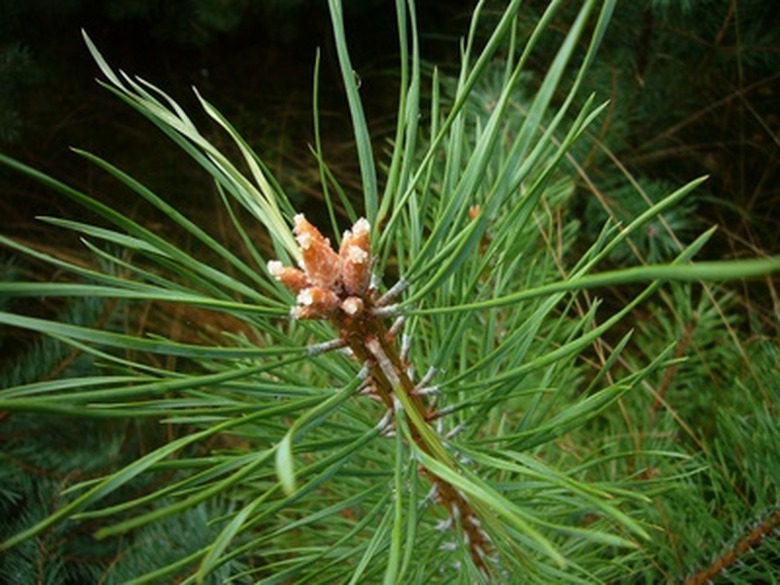What Happens When Cutting The Tip Off A Pine Tree?
Evergreen trees, including pines, need very little pruning compared to deciduous trees. Whether you want to cut off the tip, also known as the leader, of your pine tree depends on the effect you hope to achieve. It also depends on whether the tree in question is actually a pine, give that people often say "pine" to describe all types of evergreen conifers. The main reason to cut a pine tree leader is to create a bushier and fuller small tree, such as a classic Christmas tree.
Evergreen Branching
Evergreen conifers have thin needle-like leaves and, at least seasonally, woody seed-bearing cones. Beyond that evergreens are grouped by branching type. Evergreen trees and shrubs including cedars, junipers and yews have a random branching habit, which means that branches emerge randomly from the trunk as the tree grows upward. Pines, firs and spruces feature a whorled branching pattern, with new branches emerging in a circular pattern from a limited number of buds near the growing tip.
- Evergreen trees, including pines, need very little pruning compared to deciduous trees.
- Evergreen trees and shrubs including cedars, junipers and yews have a random branching habit, which means that branches emerge randomly from the trunk as the tree grows upward.
Evergreen Leaders
The leader on an evergreen is the vertical stem at the top of the tree, the growing tip that naturally directs new growth upward. If in nature a leader is snapped off or otherwise damaged, the next highest strong young branch grows upward to become the tree's new leader. Gardeners and arborists can speed this repair process by providing a temporary splint to support the developing new leader then removing adjacent lateral branches.
General Evergreen Growth
Annual branch growth for a pine or other whorl- branched conifer is determined by shoots pre-formed in buds surrounding the leader. Pines and similar conifers usually produce just one spurt or flush of growth each year, when these shoots suddenly emerge and grow into stems that will "follow the leader" and produce the next year's whorl. Never prune into the inactive center of a pine or other whorl-type conifer branch–areas where no needles or leaves are attached–because there are no growth buds there, and new branches won't form.
Removing the Leader
According to University of Idaho Extension, removing the leader will "shorten the space between the whorls of the pine, producing a fuller, more compact plant." To achieve this, prune the central leader to a 10- or 12-inch stub, making the cut at a 45-degree angle just above a well-formed bud–preferably on the north side of the plant. Then cut back the surrounding whorl of branches until they are 4 to 6 inches shorter than the leader. For a uniformly shaped pyramidal tree, prune side branches in a similar fashion.
- The leader on an evergreen is the vertical stem at the top of the tree, the growing tip that naturally directs new growth upward.
- Annual branch growth for a pine or other whorl- branched conifer is determined by shoots pre-formed in buds surrounding the leader.
When a Leader is Removed
As explained in the Ohio State University Christmas tree production manual, cutting or shearing the leader of Scotch and other pine trees encourages the development of interfascicular or dormant buds, "tiny buds that occur between and at the base of the needles." The growth and development of these buds, normally controlled and suppressed by the leader's terminal and lateral buds, begins when the leader is pruned. New limbs that arise from awakened buds "add greatly to foliage density."
Best Time to Remove a Leader
Prune a pine leader when the tree reaches its final height. Without a leader, it won't be growing any taller. Also remove leaders early in the growing season, to give dormant buds plenty of time to develop into vigorous new buds–keeping in mind that those new buds determine all shoot growth for the following year. Shearing too late in the season can also cause limb dieback in white pine and other vulnerable pine varieties.
